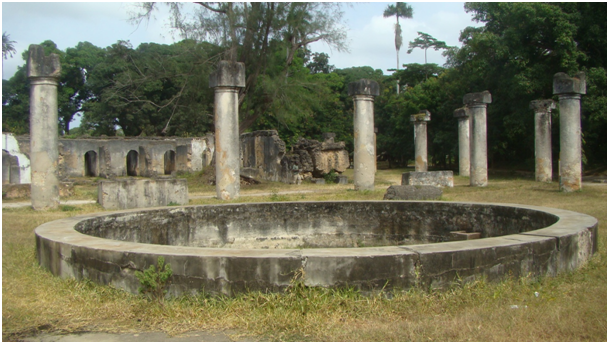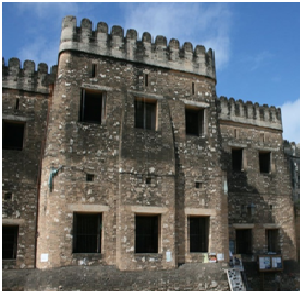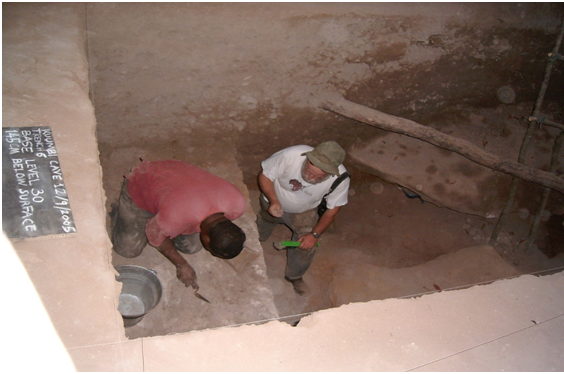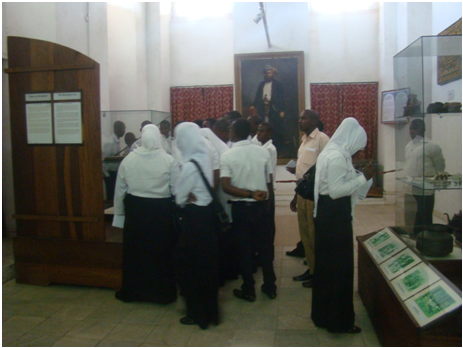
MARUHUBI RUIN
Maruhubi Palace was built in 1881 by extravagant Sultan Barghash as pleasure house for his harem, the Palace was surrounded by an extensive wall enclosure with a garden planted with a great variety of mango trees imported by Sultan Barghash from India.

ZANZIBAR OLD FORT

Built around 1700 by SeyyidSeif bin Sultan of Ya’aruba Dynasty who ruled Oman from 1692 to 1711 D. This site was once occupied by Portuguese chapel and small fortified houses before their total expulsion from East Africa in 1698. The Oman Arabs replaced the Portuguese remnants by construction of western side of the fort. Some of chapel remnants can be seen on north western corner wall of the fort until today. In 1836, Seyyid Said himself added eastern half of the fort for the purpose of keeping his garrison. The Omanis partially demolished the Portuguese chapel and a Portuguese merchant house and incorporated them in the construction of what was described in 1710 as a ridiculous little Fort. In the later years it was used as a prison. In 1905, the fort was used as a railway station and a deport. The front passage was constructed in 1946 to house ladies club. From 1964, it is used for cultural performances. Currently, it is a home for several festivals such as ZIFF, Sauti za Busara (Sound of Wisdom) etc.
The Museum Education Unit has following duties.
1. To organize, manage and offer tours to the visitors and students visiting to the museum and historical sites.
2. To give lectures or instructions to the visitors and learners attending the museums.
3. To assist and guide the researchers who are seeking information relating to Zanzibar history and culture.
4. To provide accurate required historical and Culture information to the researchers and learners for academic purpose.
5. To organize, supervise and take care of the museum exhibitions incorporation with other museum sections.
6. To conduct researches in order to collect valuable information for educational programs.
7. To motivate the people within and outside the country to visit and use our museums and historical sites for enjoyment, learning, leisure and rest.
To inspacte Zanzibar monuments and ruins , and looking for thedevolopment, challanges and advive the department what should be taken to make site in safe condition. Also, another functions is to visit Zanzibar Historical sites and report as quik as possible in case there are the destruction , demage accident or illegal taking of Historical area or ruins
CONSERVATION:
DOCUMENTATION:• The duties of documentation Unit: To register all artifacts most concerned with documentation and record keeping. This documentation includes information about an object's condition, its accession number or identification number and its status in the museum, provenance, materials, and all of its movement within the museum or out on loan. • • When an object arrives at the museum for the first time as a prospective addition to the collection, a registrar immediately begins the documentation and tracking process by assigning a temporary identification number and assembling records that include the object's condition, date of arrival, the reason for its arrival at the museum, and a photograph documenting its physical appearance. This information follows the object through the acquisition process, tracking its movements. If the museum decides to accept the object, the registrar will then update the record, assigning a permanent accession number to the object. • Loans: Objects are loaned between museums for a variety of reasons, typically for special exhibitions. As with acquisitions, the registrar assigns a temporary identification number to objects on loan to the museum, documents their condition, and creates a file to follow the object's movement while it is in the museum. Registrars are also present at the loading dock upon arrival to supervise the unloading, condition of packing material, and ensure that the objects are handled properly. In the case of outgoing loans, the registrar documents which objects are leaving the museum and either carries out or oversees their packing for shipment, and loading into the shipping vehicles.
The roles of Markerting, Publicity and Information Technology. 1 To undertaken all Publicity and Markerting activities. 2 To undertake , develop, and update the departmental website and any others information devices. 3 To create, plan ,propose and take necessary measure for the Department. 4 To link and corperate with departmental units and all tourism agencies inboosting mutual relationship. 5 To creat the awareness to the whole communities. 6 To organise TV's and Radio's programms. 7 To arrange domestic tourism tourisms trips to museums and Antiquities destination. 8 To organise and participate in exhibition. 9 To undertake regular advertisement through magazines, flyers, brochures, barners, posters, calendes, maps and any other means od media reacheable by the domestic and International communities. 10 To providing routing working and directive reports. 11 To prepare working and budget plan according to the requirement.








